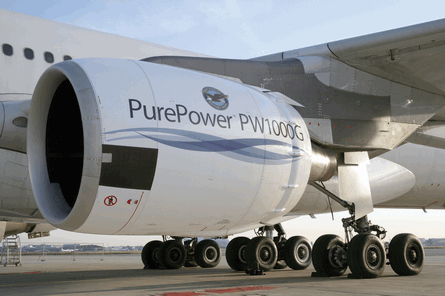The turmoil in the world’s money markets appears, so far at least, to be passing the world’s engine OEMs by – including Pratt & Whitney Canada (P&WC), according to executive vice-president John Saabas.
“The company’s backlog is extremely strong, and we are anticipating no impact whatsoever this year. Indeed, the way things are looking at present, our order book is extensive and the future looks hugely secure,” he says.
Saabas says one of the company’s key current projects – the PW810, slated to power Cessna’s new large-cabin Citation Columbus business aircraft, is progressing well with the architecture “cast in stone”. P&WC engineers have begun the detail design of various components, with collaboration from suppliers and other partners and working with the objective of significantly reducing assembly and test time.
 |
|---|
© Pratt & Whitney |
This next-generation product takes full advantage of the latest materials and aerodynamic and design technologies to incorporate advanced fan, compressor, turbine and low-emissions TALON combustion systems. This is all designed to surpass ICAO emissions standards by up to 50% for NOx and by up to 35% for CO2 emissions.
Overall environmental friendliness will also be enhanced through low unburned hydrocarbon and smoke emissions while its noise footprint will be well below Stage IV standards.
The first engine to test (FET) is scheduled for mid-summer 2009, with the first flight on a testbed aircraft between eight and 12 months after the FET milestone.
The Citation Columbus – designed for intercontinental travel with a target range of 4,000nm (7,408km) at Mach 0.80 carrying eight passengers – is scheduled to enter service in 2014.
Saabas says the PW800 engine family is involved in “competitions” for other applications in the 10,000lb to 16,000lb thrust range, though he won’t say which airframers are involved. The PW800 shares a common core with P&W’s geared turbofan engine, now called the PurePower PW1000G, and the family of engines could well be developed “with smaller or larger fans and maybe additional boost stages, should the market demand”, says Saabas.
The PW617 engine for Embraer’s Phenom 100 VLJ achieved Transport Canada certification earlier this year, and Saabas anticipates no problems in adding FAA and EASA certification by the year-end. Already around 30 production engines have been shipped to Brazil for installation.
P&W C’s PW307B engine – for the Learjet 85 – is also moving through its certification programme while the PW535E, for Embraer’s Phenom 300, should achieve certification at the end of Q4 this year, or early in Q1 2009. This airframe/engine combination is due for certification during 2009.
Saabas concludes by saying that P&WC’s future is secured by the company’s concentration on aftermarket service, together with its strong order book.
Source: Flight International























